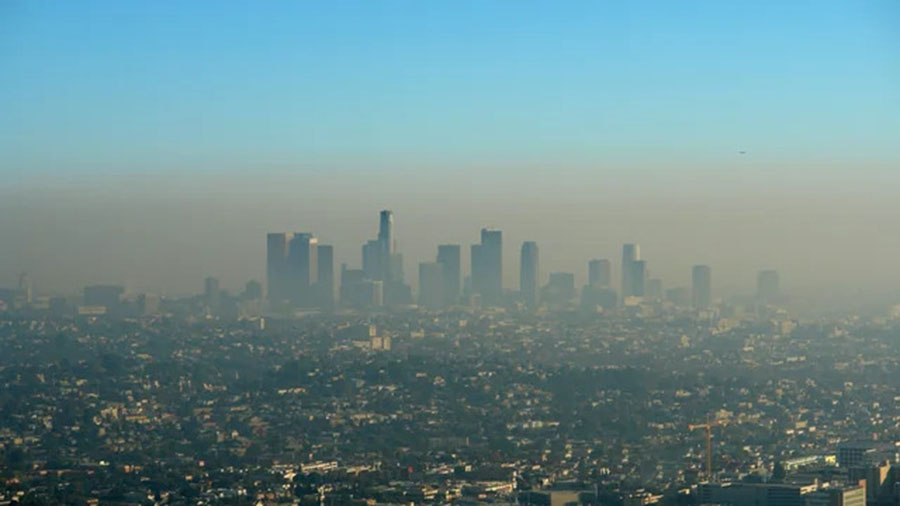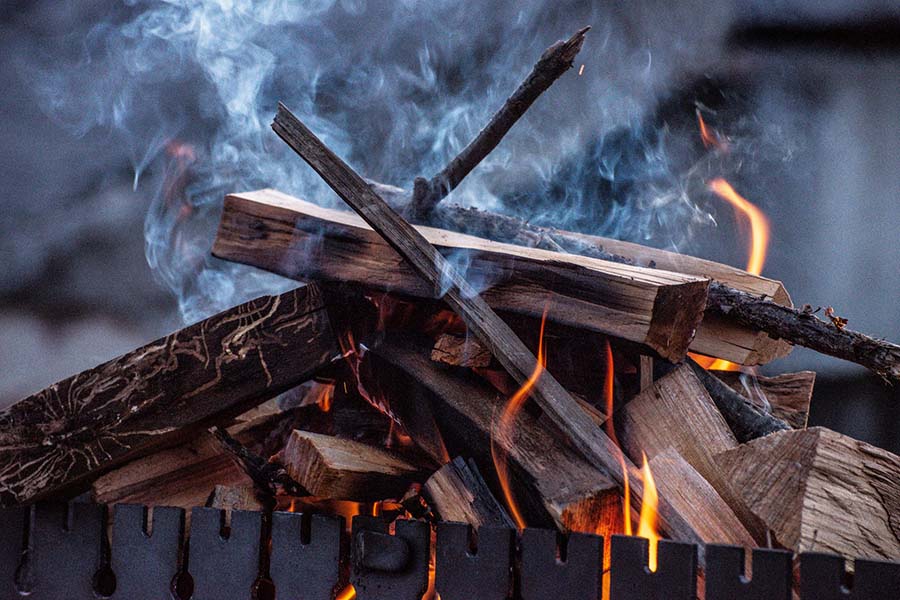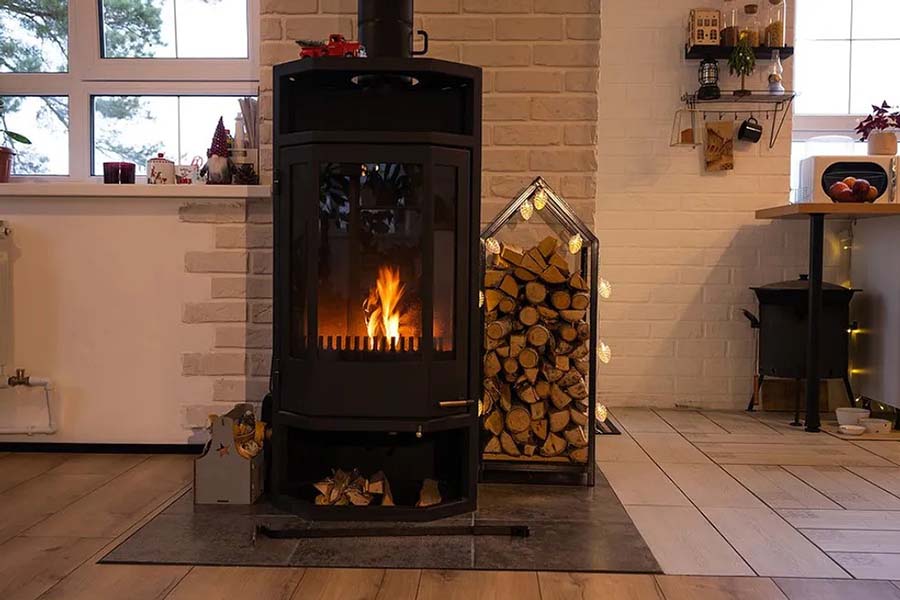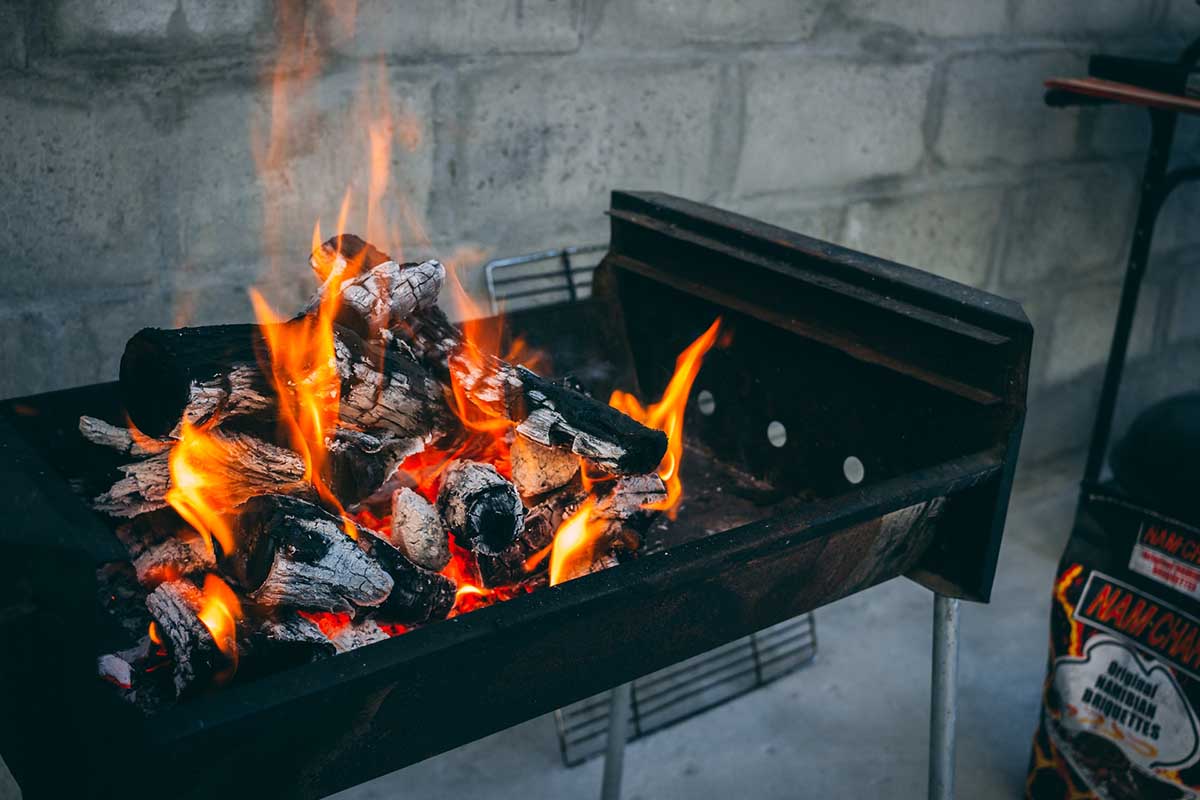Wood-burning fireplaces have long held a cherished place due to their cozy ambiance and rustic charm. However, increasing concerns about air quality and environmental impact have brought the legality of wood-burning fireplaces into question, especially in states like California.
In this article, we’ll explore the regulations that surround wood-burning fireplaces in California, the reasons behind these regulations, and alternative heating methods you should consider.
California’s Wood Burning Fireplace Regulations
California has implemented stringent regulations to reduce wood smoke pollution and address air quality problems, particularly during periods of poor air quality. The “Spare the Air” program, along with local ordinances, has significantly affected the use of wood-burning fireplaces. These regulations aim to minimize air pollution and health risks associated with wood smoke emissions.
The Issue of “Bad Air Days”

One of the main drivers behind the regulations on wood-burning fireplaces is the occurrence of “bad air days.” These are days when air quality is compromised due to high levels of pollutants, including particulate matter from wood smoke. These pollutants can worsen respiratory issues and pose health risks, leading authorities to restrict or ban wood-burning during such times.
Can Wood-Burning Fireplaces Be Used in California?
Although California does not explicitly prohibit wood fireplaces, the state heavily regulates their use, particularly on designated “no-burn” days. However, specific situations exist in which wood-burning fireplaces can be legally used. These include employing an EPA-certified wood-burning device or using wood fires as the primary heating source.
Wood Burning Produces Wood Smoke and Air Pollution

Wood-burning stoves emit harmful pollutants and significant air pollution, including fine particulate matter, carbon monoxide, and volatile organic compounds. These pollutants contribute to smog formation, poor air quality, and various health problems, underscoring the need to address wood smoke emissions.
Why California Bans Wood-Burning Fireplaces
Due to substantial concerns regarding air quality and public health, California enforces stringent regulations on wood-burning fireplaces, including bans on specific days. These bans are primarily implemented for the following reasons:
1. Air Pollution
Wood-burning stoves and fireplaces release various pollutants, including particulate matter, carbon monoxide, and volatile organic compounds, contributing to air pollution. These pollutants can exacerbate respiratory conditions and pose health risks, especially for vulnerable populations like children, the elderly, and those with pre-existing respiratory problems.
2. Smog Formation
The pollutants emitted by wood stoves contribute to smog formation, a type of air pollution that can result in reduced visibility, respiratory issues, and other health complications.
3. Particulate Matter
Fine particulate matter (PM2.5) is a significant concern associated with wood smoke. These tiny particles can deeply penetrate the lungs and even enter the bloodstream, causing a range of health problems such as asthma, heart attacks, and cardiovascular issues.
4. Environmental Impact
The use of wood fireplaces also contributes to deforestation and increases the carbon footprint. Burning wood releases carbon dioxide and other greenhouse gases into the atmosphere, contributing to global warming and climate change.
5. Spare the Air Programs
California’s “Spare the Air” program, in conjunction with local ordinances, seeks to improve air quality by reducing emissions from various sources, including wood-burning fireplaces. Authorities often implement bans on wood burning during periods of poor air quality to prevent further degradation.
6. Regulatory Efforts
In response to these concerns, California has implemented more stringent regulations on wood-burning appliances and their usage. This includes requirements for cleaner-burning devices and restrictions on burning wood during days when air quality is compromised.
Although wood-burning fireplaces are not completely banned in California, the regulations are designed to reduce their negative impact on air quality and public health.
As the state continues to prioritize environmental and public health considerations, ongoing efforts may encourage cleaner and more sustainable heating alternatives, reducing reliance on traditional wood-burning fireplaces.
The Pollution and Legality of Wood-Burning Fireplaces

Wood-burning fireplaces hold an undeniable charm, offering a rustic ambiance, cozy atmosphere, and the comforting warmth of a real fire. However, they also have significant drawbacks. These traditional hearths are known for emitting a considerable amount of pollutants, contributing to air quality problems and potential health risks.
Aside from their environmental impact, wood-burning fireplaces often lack efficiency. A significant portion of the heat they generate escapes through the chimney, leaving the room significantly colder than desired. This inefficiency leads to higher energy consumption and increased heating costs.
Despite these concerns, many parts of the country still allow wood-burning fireplaces. While some regions recognize the need for stricter regulations to combat pollution, most states have not yet banned these nostalgic heating sources. The debate surrounding fire pits and their legality continues as authorities strive to balance tradition’s charm with the urgent need for cleaner air and more efficient heating solutions.
It’s important to acknowledge that while wood-burning fireplaces remain legal in most places, their future status remains uncertain. As environmental awareness grows and governments work toward reducing carbon footprints, the day when these classic hearths face stricter regulations or even bans might not be far off. For now, individuals who enjoy the crackling allure of wood-burning fireplaces should consider implementing best practices to minimize pollution and explore alternative heating methods to reduce environmental impact and heating costs.
Can You Construct a House with a Fireplace in California?
Constructing a new house with a wood-burning fireplace in California may be subject to local building codes and regulations. Some areas might permit wood-burning fires, while others could enforce restrictions or mandate the installation of more efficient and cleaner heating alternatives.
Is Exclusively Using Gas-Burning Fireplaces Allowed?
Gas-burning fireplaces offer a cleaner and more efficient alternative to traditional wood-burning fireplaces. These fireplaces emit significantly fewer air pollutants and provide the warmth and aesthetic appeal of a fire without the environmental concerns associated with wood smoke pollution and burning wood.
Can You Modify a Wood-Burning Fireplace to Make It Legal?
Depending on local regulations and the specific details of your wood-burning fireplace, it may be possible to modify it to meet the requirements for legal use. This could involve retrofitting the wood fireplace itself with emission-reducing technologies or converting it into a gas-burning unit.
Is It Possible to Use Your Fireplace and Minimize California Air Pollution?
If you’re committed to using your wood-burning fireplace, you can take steps to reduce air pollution. Using only dry, seasoned wood, ensuring proper ventilation, and adhering to burn bans during periods of poor air quality are some ways to reduce the impact of your wood stove or fireplace on air quality.
What Harm Does a Wood-Burning Fireplace Cause?
In addition to air pollution, wood-burning fireplaces can be inefficient and costly heating options. They also contribute to deforestation and the release of greenhouse gases. Understanding these consequences sheds light on the importance of considering alternative heating methods.
Fireplaces and Old Woodstoves are Inefficient, Expensive Heaters

Wood-burning fireplaces and outdated wood stoves often lose a significant amount of heat through the chimney. This inefficiency leads to higher energy consumption and increased expenses. Exploring modern heating technologies can help homeowners save both money and energy.
Reduce the Impact of Your Air-Consuming Fireplace by Trying Alternative Heating Methods
Embracing alternative heating methods such as electric fireplaces, pellet stoves, or efficient wood-burning inserts can provide warmth and ambiance while significantly reducing pollution and energy waste. These options align with the push for cleaner and more sustainable heating solutions.
Conclusion
Concerns about air quality and environmental impact are intertwined with the legality of wood-burning fireplaces in California. While they are not universally illegal, their use is subject to strict regulations aimed at minimizing air pollution.
Exploring alternative heating methods can provide homeowners with cozy comfort while contributing to a healthier environment.
Whether through gas-burning fireplaces, retrofitting, or embracing modern heating technologies, it’s essential to consider the broader impact of our heating choices.






